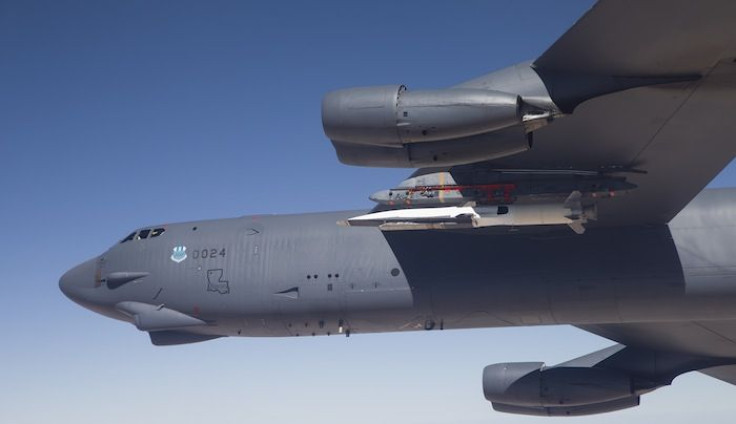DARPA's Hypersonic Jet Project Marches Forward As Russia Teases Mach 5 Missiles [VIDEO]

The U.S. Air Force and DARPA, the research arm of the Pentagon, are putting their minds together to develop a new hypersonic jet by 2023 that could conduct missions at five times the speed of sound. While few details of the plan have gone public, the development aims to build on a successful hypersonic flight test that occurred over the Pacific Ocean in 2013.
Planning began shortly after the X-51A, a Boeing Waverider, flew at a speed of Mach 5 (or 3,806 mph) for 240 seconds before burning through all of its fuel and crashing into the ocean two years ago. The military is now working to improve upon that test, with better defense technology as the ultimate goal.
“X-51 was really a proof-of-concept test. It showed that you could get a scram jet engine, launch it off an aircraft and it could go hypersonic,” said Air Force Chief Scientist Mica Endsle, as quoted by Live Science. “It was able to go more than Mach 5 until it ran out of fuel. It was a very successful test of an airborne hypersonic weapons system.”
But the Air Force and DARPA had better get to work if they want to keep up with the Russian military. The United States' Cold War adversary has been bragging about its own hypersonic missile, which could eventually carry nuclear warheads and subvert sophisticated defense systems. China has also sought to develop hypersonic military systems.
DARPA is working on a number of hypersonic projects. In 2012, the agency made headlines when it flew an unmanned vehicle at Mach 20, or 13,000 mph, for a short time before losing control.
© Copyright IBTimes 2024. All rights reserved.











